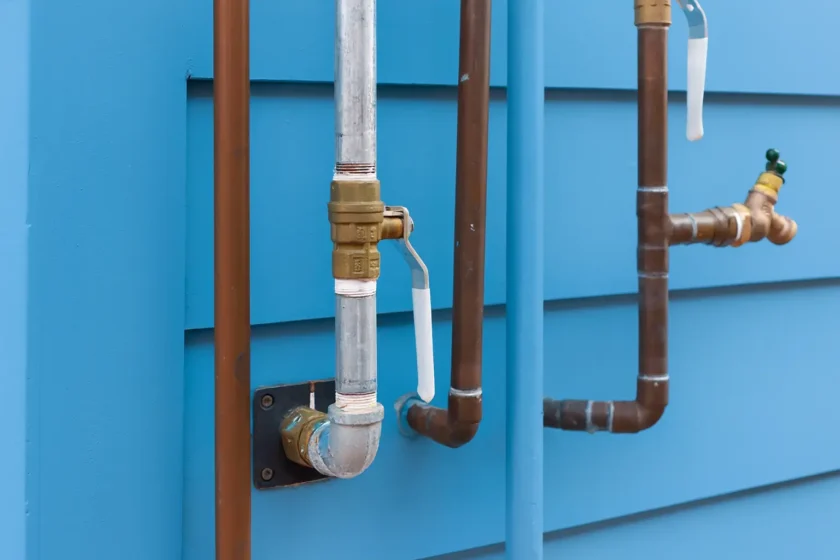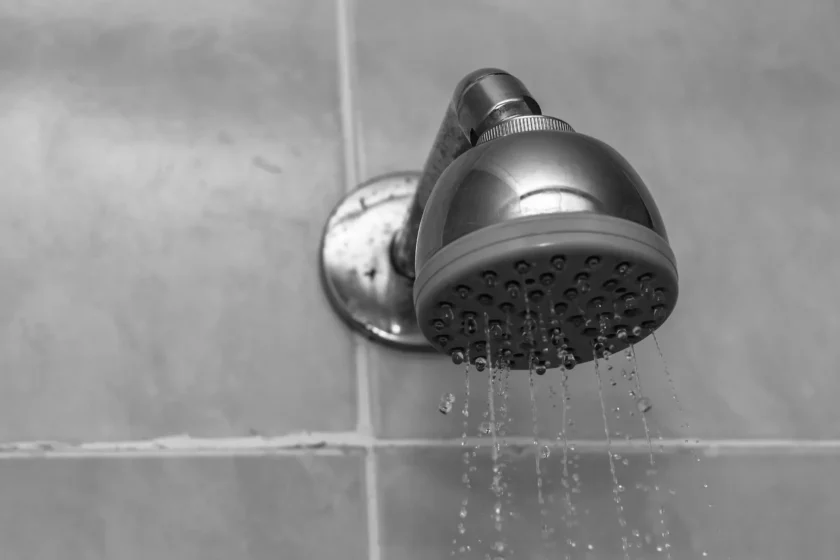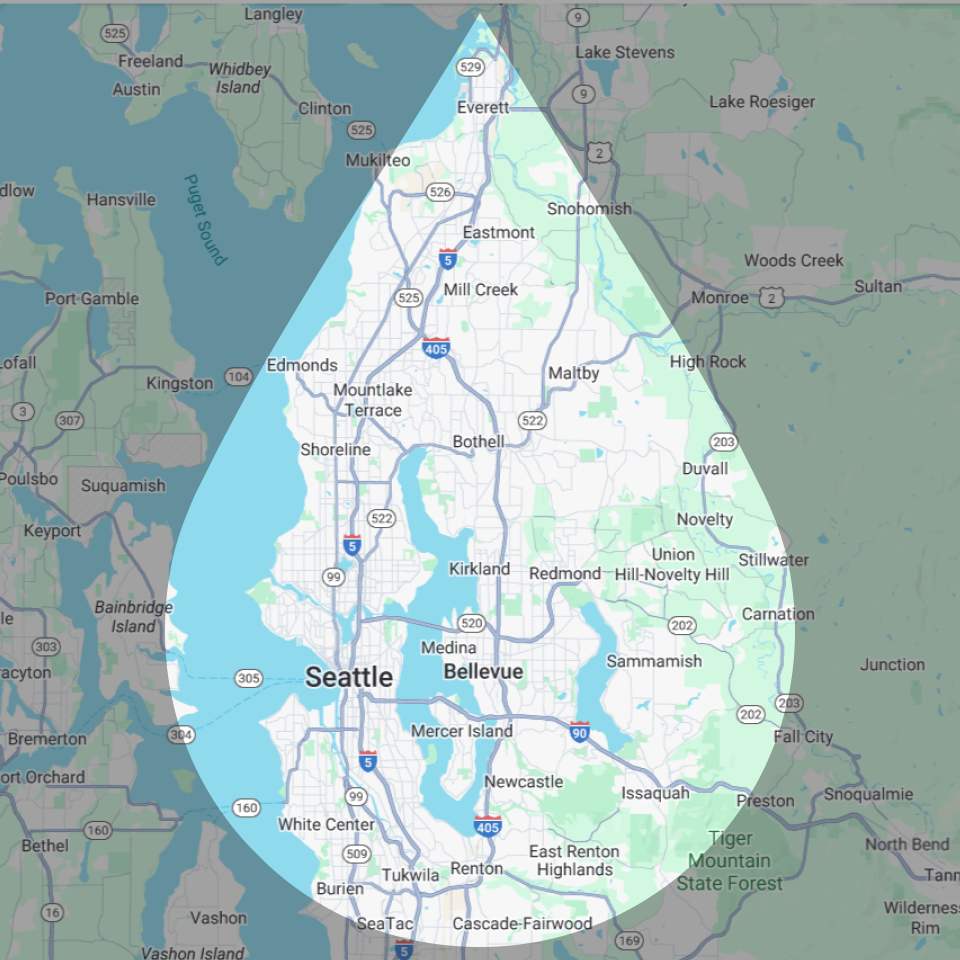A weak shower turns a fresh start into a frustrating one. The upside: most water pressure problems in showers have clear, practical fixes. This guide explains what causes low water pressure in the shower, how to test it step by step, and smart ways to boost performance—first without buying anything, then with targeted upgrades. If the issue persists, Ben’s Plumbing can help through licensed shower repair in Seattle.
What causes low water pressure in the shower?
Low pressure (or more precisely, low flow at the head) usually comes from one or more bottlenecks between the main supply and the spray nozzles. Common reasons include mineral buildup in the showerhead, a mis-seated or clogged flow restrictor, partially closed valves (main shutoff, angle stops, water-heater isolation), a worn shower cartridge inside the mixing valve, sediment in the water heater (weak hot side), kinked or undersized supply lines, a drifting or failing pressure-reducing valve (PRV) at the house entry, corroded galvanized piping, or shared-line demand in apartments/condos that temporarily pulls pressure down. Pinpointing the right bucket—fixture level vs. whole-home—saves time and money.
Is my shower water pressure really low? Test it!
A. Pressure test (with a small gauge)
Remove the showerhead, wrap the shower arm threads with PTFE tape, and hand-thread a store-bought pressure gauge. Open the valve fully to see dynamic pressure—that’s what you feel while water is running. Most showers feel good when dynamic pressure at the fixture is roughly 45–60 psi. Close the valve to check static pressure. If static is fine but dynamic drops hard at this fixture, there’s a restriction downstream (cartridge, supply to this valve, or the head you removed).
B. Bucket flow test (what you actually experience)
Leave the showerhead on. Run the shower at your normal temperature and catch water in a container marked at 1 gallon. Time how many seconds to reach that mark and compute GPM = 60 ÷ seconds. Modern heads often deliver ~1.75–2.5 GPM; well below that feels weak. Repeat with cold only and hot only (carefully). If cold is strong and hot is weak, suspect heater sediment or hot-side cartridge restriction.
Simple fixes may help, but lasting results often need expert care.
How to increase water pressure in the shower?
Start with no-cost and low-cost maintenance that often fixes the issue on the spot. Then, if needed, move to device upgrades or professional repairs. Throughout this section, you’ll see several phrasings (“how to fix water pressure in shower,” “how to improve water pressure in shower,” “ways to increase water pressure”)—they all point to the same practical steps below.
Fully open the valves
Surprisingly often, reduced water pressure in shower is just a valve that isn’t all the way open. Confirm the main shutoff is fully open, check any angle stops feeding the shower valve, and verify the water-heater isolation valves are open. If pressure is suddenly low, think back to recent service work; a tech may have left a valve partially closed.
Clean and descale the showerhead
Mineral scale throttles flow and makes a good system feel weak. Unscrew the head, remove the small screen washer, and rinse away debris. Soak the head in white vinegar for 20–30 minutes to dissolve limescale (avoid prolonged soaking of rubber parts), rinse thoroughly, and re-install with fresh PTFE tape. Gently clear rubber nozzles with a soft brush or toothpick. This simple maintenance is a classic low pressure shower head fix.
Inspect the flow restrictor and screen (don’t defeat it)
Behind the washer you’ll usually find a screen and a colored restrictor disk. If grit is lodged there, flow will nosedive. Clean and re-seat these parts; many homeowners report a big difference afterward. Does shower head affect water pressure? Yes—design and cleanliness matter. But permanently removing the restrictor may violate local rules and won’t cure deeper issues like a failing PRV or a clogged cartridge. A high-performance, compliant head is the better solution when you want to get more water pressure in shower without code headaches.
Flush or replace the shower cartridge
Inside the mixing valve, a pressure-balancing/thermostatic cartridge meters hot and cold. Wear, debris, or scale can choke flow. Turn off water to the bathroom, remove the handle/trim, and pull the cartridge per the manufacturer’s instructions. Flush the body to clear grit, replace tired O-rings, lubricate with silicone grease, and re-install—or swap in a new OEM cartridge. If you notice low water pressure in shower after replacing valve (or after construction work), grit stirred up in the lines can lodge in the cartridge; a flush often restores performance.
Purge sediment from the water heater
If hot-side flow is weak, sediment may be the culprit. For tank heaters, attach a hose to the drain, open a nearby hot tap, and flush until clear. For tankless units, perform a descaling cycle with a pump and vinegar/descaler. Restoring heater flow often improves shower water pressure instantly.

Adjust or replace the PRV (house-wide issue)
When the whole house feels sluggish—even at a hose bibb—your PRV may be set too low or failing. A careful clockwise turn on the adjustment screw raises pressure (make changes in small steps and re-test). Aim for ~50–70 psi at rest. If the PRV won’t hold a steady setting, replacement is the fix. This single change can make water pressure stronger at every fixture.
Consider supply lines and pipe condition
Kinked flex connectors, tight bends, or long runs in undersized pipe reduce flow. In older homes with galvanized steel, interior corrosion shrinks diameter over decades. Strategic repiping (copper or PEX) can transform the shower experience and eliminate recurring water pressure issues.
Upgrade to a high-performance showerhead
Not all 2.0-GPM heads feel the same. Aerated/venturi designs maintain a satisfying spray at moderate pressures. If you’re asking can a shower head increase water pressure or will a new shower head improve pressure, the honest answer is: it doesn’t raise house pressure, but the right head can deliver a stronger-feeling spray from the flow you already have. This is the fastest way to increase shower head pressure without plumbing work.
Replace the shower valve (when the body is the bottleneck)
A worn or outdated valve body can starve the shower even when the cartridge and head are fine. Upgrading to a modern pressure-balancing or thermostatic valve improves stability and usable flow. It’s a pro project, but it solves stubborn cases that resist simpler fixes.
Special note for apartments/condos
Wondering how to increase water pressure in apartment shower? Start with the same maintenance (clean head, check restrictor, flush cartridge). If improvements vanish at peak times, shared risers and building PRVs may be the true cause. In multi-unit buildings, booster pumps are building-level solutions—individual units typically can’t install their own.
Great Reasons to Choose Shower Head Replacement Services by Ben’s Plumbing
Swapping a showerhead seems simple until you’re sorting GPM ratings, spray tech, cartridge compatibility, and Seattle code. Here’s why homeowners call Ben’s Plumbing:
- Licensed diagnosis. We separate head vs. cartridge vs. PRV causes so you buy the right fix.
- Performance at your pressure. We recommend high-performance, code-compliant heads that feel great even at 45–50 psi.
- Clean, to-code installs. From descaling and cartridge swaps to PRV service, we test and verify steady temperature and strong, even spray.
- If it’s not the head… We can address heater sediment, line restrictions, or valve bodies in the same visit.
If your shower still feels weak after cleaning the head, checking valves, and flushing the cartridge, it’s a sign of a deeper issue. Professional shower repair services ensure the root cause is fixed properly and safely. For homeowners in Seattle, Ben’s Plumbing provides licensed bathtub and shower repairs backed by years of experience.
Please Click to Call or Fill out our Contact Form Here



